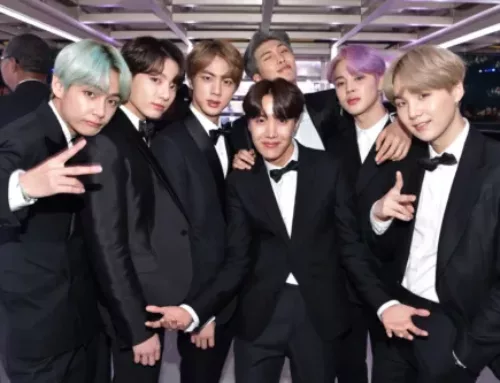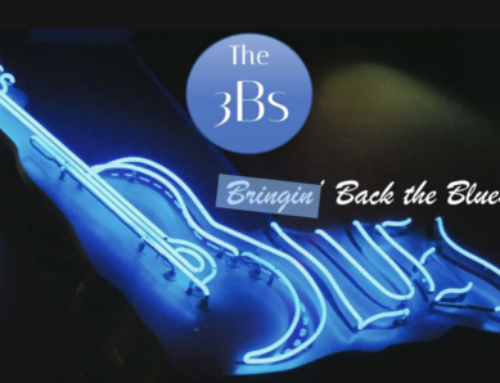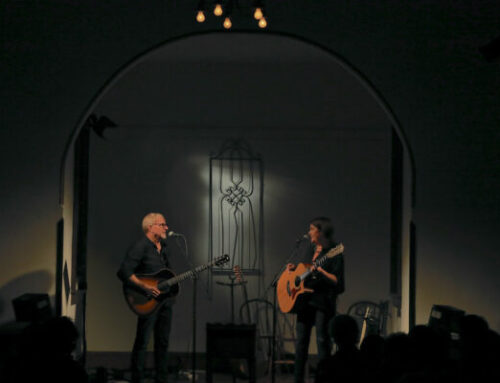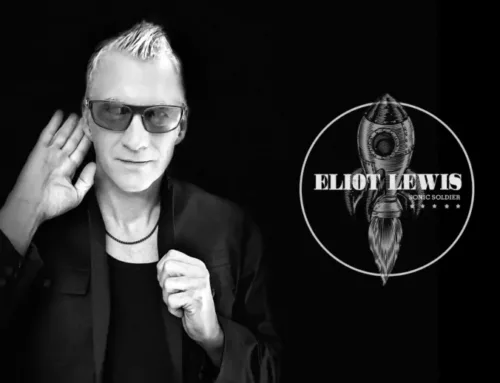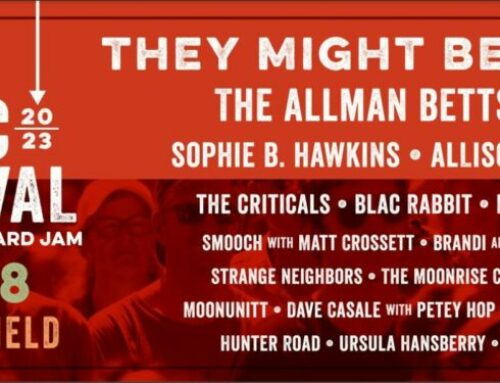The Turning Point: 47 Years Strong
by Elisa Zuckerberg, Founder of HearItThere
Wednesday, February 22, 2023
In 2017 I began my research into the local live music by asking my friends where they like to go. A number of die-hard music fans had the same response, The Turning Point in Piermont. With a sensational 47 year history the landmark continues to be an essential part of the live music scene in the Hudson Valley today.
Located in Rockland County, along the Hudson River, sits The Turning Point in Piermont, New York. There are gift shops, restaurants, cafes and a vibrant music venue!
The event listings on The Turning Point’s website give basic details about the artists playing there (and links), since most who perform are already well-known. The reservation system is simple, there’s no pretense and that’s part of the charm.
In 2021 I attended songwriter Bruce T. Carroll’s record release and finally witnessed what all the hoopla was about. As I entered this small and welcoming place, owner John McAvoy greeted us with a big hello. I immediately had a sense of awe knowing that over 48 Rock and Roll Hall of Famers had graced that stage; Les Paul, Laura Nyro, Bill Monroe, John Cale, Ronnie Spector and a long list of other recognizable names.
Owner John McAvoy and I spoke a month ago about the origins of The Turning Point, how national touring acts found their way there, and how it survived a COVID shutdown.
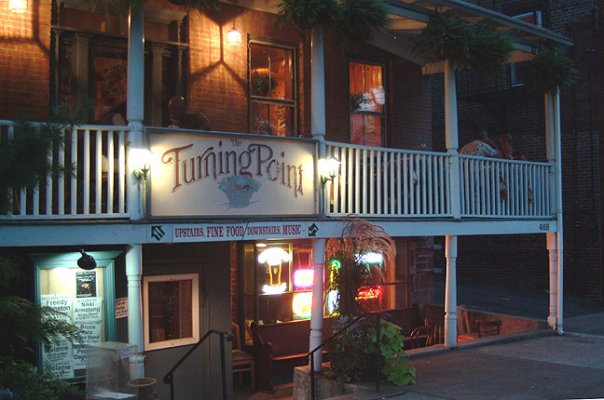
Elisa: Thank you for taking time to speak with me, I really appreciate it. Let me begin by saying I’m very impressed with your venue’s longevity and your great reputation.A quick background about me, five years ago I launched a platform for sharing local live music called HearItThere. When I asked my music loving friends where they like to go – their favorite venues, The Turning Point was always on top of the list.
John: We try to make it a spot that works for everybody, being so small is difficult at times. Fortunately, we had a good opportunity a number of years ago to start presenting national performing artists.
Elisa: Let’s go back to the beginning. When you started in the seventies, how did the musicians know about you? How did you attract accomplished artists?
John: Actually, there was an eight-year gap from our beginning and the national acts. We started in ’76, but it was all local musicians. We were down the street from our current location at about 35-40 seats. It was a coffee house scene and we’d pass the bottle for donations. Then we outgrew the room. In ‘78 we purchased the building where we are now. It took us three years to get it organized, then renovated and finally opened up in ’81.
In the early 80s the legendary ship, Pete Seeger’s Sloop and Clearwater folks used to stop in town during their pumpkin sale and educational programs and would stop in. The great pier in Piermont sticks a mile out to the river. Because of this, they would dock on the end and stay here for a day. Some of the volunteers on the ship knew about The Turning Point. They approached me one night and said, “We’ve been on the ship now for a week, two weeks. While we’re in town it’d be nice to be able to get together on land and do something like a sing-along group or a hootenanny type of thing.” And I said, “okay, sure. I’ll open the room for you.” Among the crew was obviously a guy named Pete Seeger. It was phenomenal having him in our room. There was also this other fellow, named Tom Wolke, who worked for a booking agent. (New York City) who saw the opportunity to book some of the musicians they represented. It sounded like an interesting idea and I was very excited. Growing up as a child of the sixties, going down to the (NYC) village and now being able to have some of the people that were part of that scene come to my club and play!
The first artist that performed was legendary folk singer Eric Anderson and contemporary of Bob Dylan from the village scene. I had to pay him a whole lot more than I was normally used to paying. It was a very scary thing, but it turned out to be a great success. At that point, the booking agent said, ‘John, what about Ramblin’ Jack Elliott,’ a renowned musician. We booked him and then Odetta and then, Josh White Jr. After that we got picked up by a national publication that lists places for touring artists and booking agents. The next thing I know, I’m getting calls left and right for all sorts of national touring musicians. We started with one or two or a month and then three or four, etc.
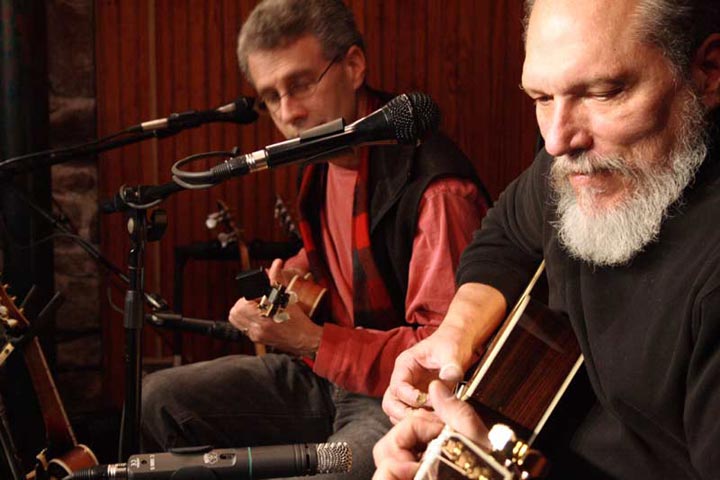
Jorma and Barry during Sound check before their two sold out shows 1/19 & 1/20/2007 Photo JEM
Elisa: As a local live music venue, did the character of The Turning Point change?
John: Well, the drawback was that the room no longer had as much space for local musicians. People would come to the door in the old days knowing that it was free to get in. You pass the bottle, make a donation, but now all of a sudden you walk up to the door and it might be $10, it might be $15, it might be $20, which again, we’re talking 1976. So we sort of lost a local following for a while, but we picked up this national enclave of people who were coming in.The advantages for (touring) musicians, was that they’d have their weekend gigs, the moneymaker. They’d get that big paying gig in New York City and a week later be up in Boston. They’d stop by between New York to Baltimore, Boston, back down to DC.
And meanwhile they’re on the road, they’re stuck in a hotel room. It’s the old adage, either you’re spending money or you’re making money, or you’re not doing both. So, it’s better to work than not work. So even though it was a small room, it gave them an opportunity to pick up additional cash to cover expenses, pay the manager, pay the booking agent, pay the band, pay the hotels, gas and everything. As a result, they were able to go ahead and stay on the road and keep doing it. Well, that’s basically how that happened.
Elisa: Obviously you built a great reputation.
John: Yeah, we had a reputation. Right. People started calling in 1984 when we started doing this, and it was pretty amazing the people that we started getting in – mind boggling, Jorma Kaukonen, David Bromberg and John Hammond who played upstairs.
Elisa: The current downstairs space is larger?
John: The old room had electrical closets that could not be moved, it wasn’t one big room. So literally, we used to joke when we had music, the musicians were literally playing for the door because if they sat in the middle of the room, directly ahead of them was the front door. They were playing for two separate rooms at the same time.
Elisa: I see. The new room downstairs was one large open space. Were you able to fit more people?
John: A little bit more. Not much, because we had a larger bar. Legendary musician, David Bromberg played upstairs in ’84. When I brought him downstairs to show him the new room, he clapped his hands and listened to the sound and the echo. He said ‘sounds great. It’s wonderful.” And then he saw the bar and he said, ‘John, oh God, get rid of the bar, man. When they sit at a bar they will think they’re not part of the show. And they’ll sit and talk.’ And, and the fact of the matter is, he was 100% correct.
People come in, they sit at the bar and can see the whole room while sitting there. We’ve told people that these seats are just like concert seats out there. So we’ve really cracked the whip on this. I’ll say, “If you want to talk, go outside. We’re a listening room.”
Elisa: If people are talking at the bar, do you hush them?
John: Yes. We actually have a sign out that reminds them that while they are sitting at the bar, they are here for a show. If they feel like talking, they should go outside.
Elisa: I appreciate that. I’ve given up on expecting complete quiet during a performance. People are gonna talk no matter what.
John: It still makes me nuts. I will go up to people and try to be very polite, although they feel singled out. It’s the one thing I’m very strict about. We have no minimum. You don’t have to spend any money if you don’t want to, but please respect the fact that you are at a concert.
Elisa: You’ve been doing this for many years and had a number of famous people come through those doors. Have you ever been starstruck?
John: I’ve been. I can remember one time Roger McGuinn was up on the stage and he started doing the show and included a lot of the Byrds. I was going like, oh my God, that’s my college days! I had struggled to buy his record and now he’s in front of me doing this song! So yeah, Roger McGuinn, Kris Kristofferson, Arlo Guthrie, Dave Mason from Traffic. I mean they all just blew me away. These people that were in front of millions of people over the years and they’re standing on my little stage doing this right now. I’m getting to interact and chat with them.
____________________
I didn’t know what I was gonna do with my life, but I didn’t expect that I would be doing this for so long. And you know, I’m still excited about it. – John McAvoy, owner of The Turning Point
____________________
Elisa: I see Bonnie Raitt stopped by. I would be starstruck.
John: Oh, yeah, definitely. That was pretty amazing. I desperately wanted to get John Prine here, which never happened. But we’ve had 48 members of the Rock and Roll Hall Fame play at The Turning Point over the years.
Elisa: That’s pretty amazing. Now, currently you don’t have a partner, you manage this all on your own – negotiating all the contracts, managing the venue, etc.
John: That is correct. I started it with my sister back in ‘76, but after two years she went on to do other things and, and I stayed there doing it.
Once we started doing the National Acts in ‘85, I had an assortment of people. I looked back at a schedule from June, 1991 recently. That month we had 37 shows!
We had two shows some nights, Jorma at 7 o’clock and, at 10 o’clock, Buddy Guy. It’s been 47 years now and we’ve slowed down a little bit. Our crowd is getting older so they’re not coming out as much. Our Sunday early-evening shows are very popular.
Elisa: Let’s talk about promotion. How have things changed?
John: I always managed a mailing list pre-internet times, we used to send out 4,000, 5,000 music schedules. But it also limited us to that two-month period that the schedule covered. Reservations over the phone was once the only way we sold tickets. We didn’t do Ticketmaster. We took everyone’s phone number and once the computer system started in ‘91 or ‘92, we created a list of people for particular artists. Whenever we rebooked that artist, we could call to let them know. We’d make 150 – 200 calls. All we had to do was reach 40 to 50 people and it became worthwhile. When the whole email thing started, that was nice.
Elisa: I know venue owners and managers have a lot on their plate, so I don’t expect them to do the marketing all by themselves. How do you promote the venue and fill the room?
John: Artists like Steve Forbert hire someone to take care of his social media. As a result, I have noticed an uptick in his sales. Being a relatively smaller place, if it doesn’t fill up, it still feels nice. We re-arrange the room and tables so when you come in, it still feels like you’re at a packed show.
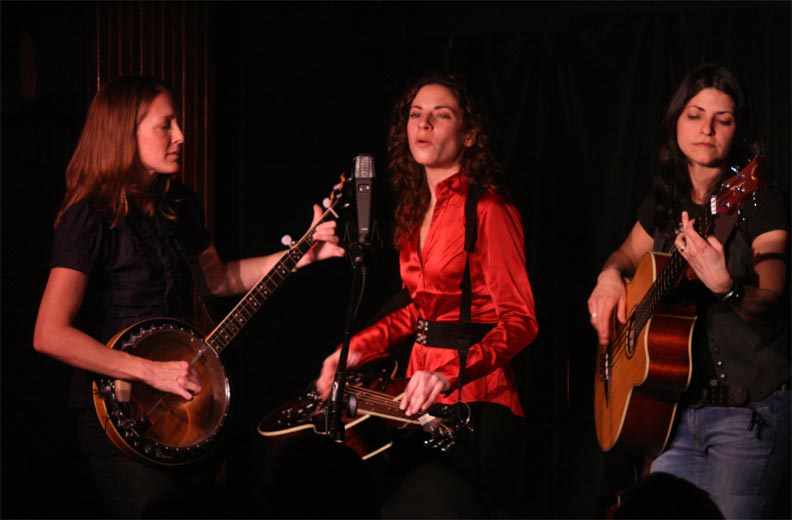
Red Molly durning their 3 appearance in the cafe Feb. 2008 Photos JEM
Elisa: I have one more question for you, John. What was your experience during Covid.
John: I own the building which I think saved us. We were closed for 14 months. We have a restaurant that we rent out upstairs, and rental income from small studio apartments. I also called up certain places that had recurring bills and suspended them. When we were about 10 months into it, the cash started drying up and the reserves I had were almost gone. I made an appeal and people came through with donations that kept the lights on for another 5 or 6 months. It was so gratifying to know that people cared that much. Fortunately, I never came into the situation of having the building or The Turning Point itself being at a loss.
We also tried doing streaming, which I didn’t like. I missed that magic of the live event happening. When we re-opened in May ‘21 it was quite a relief, but it was like a rollercoaster. I think it was May 27th when Steve Forbert come in. When we re-opened things started getting better and better and then all of a sudden in August the Delta (variant) thing happened, then Omicron in January ’22 and we got hit hard. It was up and down, but I would say right now is the first time things are coming back. In the last 2 1/2 months sales have started getting really nice where I’m starting to feel comfortable about things and can say, things appear to be back to normal.
Elisa: Well, that’s a good way to end. It’s remarkable that after all these years that you are still here and have sustained the high level of performance standards for the venue. Remarkable artists still come through your doors and with The Turning Point remaining solely a listening room, the audience can enjoy the concert experience.
Hopefully I’ll make it over there again soon. Thanks for your time!
You can learn more about The Turning Point’s History and their upcoming music schedule on their website.

